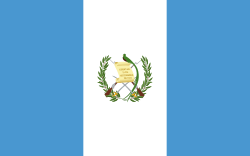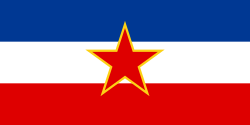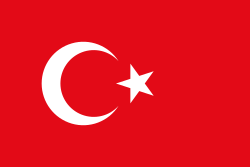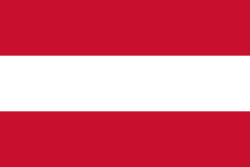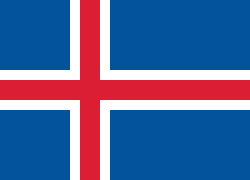Olympische Sommerspiele 1968/Fußball/Qualifikation
Qualifikation zum olympischen Fußballturnier 1968 in Mexiko-Stadt.
Qualifizierte Mannschaften
| 4 aus Europa | |||||
| 2 aus Südamerika | |||||
| 2 aus Nord- und Mittelamerika | |||||
| 3 aus Afrika | |||||
| 3 aus Asien | |||||
| Titelverteidiger : | Gastgeber : |
Europa
Die Sieger aus den vier im K.-o.-System ausgespielten Gruppen qualifizierten sich für die Endrunde.
Gruppe 1
1. Runde
| Paarung | Hinspiel | Rückspiel | Gesamt | ||
| – | n/p1 | n/p1 | n/p1 | ||
2. Runde
| Paarung | Hinspiel | Rückspiel | Gesamt | ||
| – | 2:1 | 1:0 | 3:1 | ||
| – | n/p2 | n/p2 | n/p2 | ||
Finale
| Paarung | Hinspiel | Rückspiel | Gesamt | ||
| – | 3:0 | 2:3 | 5:3 | ||
Gruppe 2
1. Runde
| Paarung | Hinspiel | Rückspiel | Gesamt | ||
| – | 5:0 | 5:0 | 10:0 | ||
2. Runde
| Paarung | Hinspiel | Rückspiel | Gesamt | ||
| – | 3:0 | 3:2 | 6:2 | ||
| – | 1:0 | 1:0 | 2:0 | ||
Finale
| Paarung | Hinspiel | Rückspiel | Gesamt | ||
| – | 4:1 | 2:3 | 6:4 | ||
Gruppe 3
1. Runde
| Paarung | Hinspiel | Rückspiel | Gesamt | ||
| – | 0:0 | 1:0 | 1:0 | ||
2. Runde
| Paarung | Hinspiel | Rückspiel | Gesamt | ||
| – | 4:1 | 0:1 | 4:2 | ||
| – | 3:1 | 1:1 | 4:2 | ||
Finale
| Paarung | Hinspiel | Rückspiel | Gesamt | ||
| – | 3:1 | 1:1 | 4:2 | ||
Gruppe 4
1. Runde
| Paarung | Hinspiel | Rückspiel | Gesamt | ||
| – | 1:1 | 5:3 | 6:4 | ||
2. Runde
| Paarung | Hinspiel | Rückspiel | Gesamt | ||
| – | 2:0 | 0:1 | 2:1 | ||
| – | n/p3 | n/p3 | n/p3 | ||
Finale
| Paarung | Hinspiel | Rückspiel | Gesamt | ||
| – | 1:0 | 0:0 | 1:0 | ||
Asien
Israel hatte lediglich Ceylon als Gegner, denn sowohl Indien als auch Persien (Iran) hatten verzichtet. Ceylon trat nur unter der Bedingung in Israel an, dass ihm die Reise- und Aufenthaltsspesen für 18 Fußballer und den Betreuerstab ersetzt wurde. Israel gewann seine Matches gegen den Inselstaat mit 4:0 und 6:0.[1]
Einzelnachweise
- ↑ Kasten unten: «Eine Hand wäscht die andere». In: Arbeiter-Zeitung. Wien 24. März 1968, S. 16 (Hinweis: Die Website der Arbeiterzeitung ist nicht mehr aktiv. Die ursprünglich verlinkten Seiten des Online-Archivs sind daher nicht erreichbar.).
Auf dieser Seite verwendete Medien
Autor/Urheber: SanchoPanzaXXI, Lizenz: CC BY-SA 4.0
Flag of Spain during the Spanish State. It was adopted on 11 October 1945 with Reglamento de Banderas Insignias y Distintivos (Flags, Ensigns and Coats of Arms Bill)
Autor/Urheber: SanchoPanzaXXI, Lizenz: CC BY-SA 4.0
Flag of Spain during the Spanish State. It was adopted on 11 October 1945 with Reglamento de Banderas Insignias y Distintivos (Flags, Ensigns and Coats of Arms Bill)
The flag of Brazil from 1968 to 1992 with 23 stars.
The flag of Brazil from 1968 to 1992 with 23 stars.
Variant version of a flag of Japan, used between January 27, 1870 and August 13, 1999 (aspect ratio 7:10).
Variant version of a flag of Japan, used between January 27, 1870 and August 13, 1999 (aspect ratio 7:10).
Flag of Mexico (1934-1968)
(c) I, Cmapm, CC BY-SA 3.0
The flag of the Soviet Union (1955-1991) using a darker shade of red.
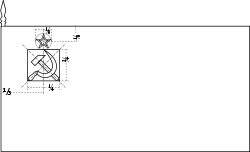
(c) I, Cmapm, CC BY-SA 3.0
The flag of the Soviet Union (1955-1991) using a darker shade of red.

Flag of Second Polish Republic and later People's Republic of Poland in period from March 29, 1928 to March 10, 1980. Red shade used here is HTML "vermilion" #E34234. Proportion 5:8.
Flag of the Socialist Federal Republic of Yugoslavia (1946-1992).
The design (blazon) is defined in Article 4 of the Constitution for the Republic of Yugoslavia (1946). [1]
Die Olympiaflagge der gesamtdeutschen Mannschaft von 1960 und 1964, sowie beider deutschen Mannschaften 1968.
Die Olympiaflagge der gesamtdeutschen Mannschaft von 1960 und 1964, sowie beider deutschen Mannschaften 1968.
Flag of Romania, (21 August 1965 - 22 December 1989/officialy 27 December 1989).

Construction sheet of the Flag of Romania as depicted in Decree nr. 972 from 5 November 1968.
- l = 2/3 × L
- C = 1/3 × L
- S = 2/5 × l
Flagge Österreichs mit dem Rot in den österreichischen Staatsfarben, das offiziell beim österreichischen Bundesheer in der Charakteristik „Pantone 032 C“ angeordnet war (seit Mai 2018 angeordnet in der Charakteristik „Pantone 186 C“).
Die quadratische Nationalfahne der Schweiz, in transparentem rechteckigem (2:3) Feld.
Flagge des Vereinigten Königreichs in der Proportion 3:5, ausschließlich an Land verwendet. Auf See beträgt das richtige Verhältnis 1:2.
Flagge des Vereinigten Königreichs in der Proportion 3:5, ausschließlich an Land verwendet. Auf See beträgt das richtige Verhältnis 1:2.
Olympic Rings without "rims" (gaps between the rings), As used, eg. in the logos of the 2008 and 2016 Olympics. The colour scheme applied here was specified in 2023 guidelines.
Olympic Rings without "rims" (gaps between the rings), As used, eg. in the logos of the 2008 and 2016 Olympics. The colour scheme applied here was specified in 2023 guidelines.
Pictograms of Olympic sports - Football. This is unofficial sample picture. Images of official Olympic pictograms for 1948 Summer Olympics and all Summer Olympics since 1964 can be found in corresponding Official Reports.
Flagge von Königreich Griechenland (1863-1924; 1935-1973).
Autor/Urheber: Scroch, Lizenz: CC BY-SA 3.0
Flag of Bulgaria (1968-1971). Flag of Bulgaria with Bulgarian coat from 1968
Flag of Second Polish Republic and later People's Republic of Poland in period from March 29, 1928 to March 10, 1980. Red shade used here is HTML "vermilion" #E34234. Proportion 5:8.





